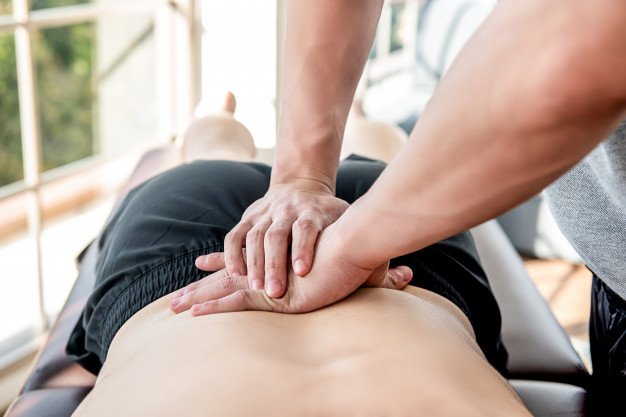Chiropractic care isn’t often something we think of as an emergency treatment. Usually, we conceptualize going to the chiropractor as a sort of routine treatment, something you do every month or every few months to when your back and neck are feeling stiff. You go get worked on to alleviate any symptoms you might have and reduce the future severity of any pain. However, emergency chiropractic care is a critical form of treatment and is not something that should go unmentioned.
Consider for a moment someone who has had an emergency. Perhaps it was a sports injury, a car crash, or some other kind of trauma that has affected their back, neck or spine. Oftentimes, you would go to an emergency room or primary care physician right away, have them look at whatever external damage there is, and ok you to return home. If your back continued to hurt for a few days or weeks after this, then you might go see a chiropractor to have it realigned. However, failing to see a chiropractor right away can bring consequences. Not only will this lengthen your recovery time, but it can also cause suffering with undeserving pain longer than perhaps necessary.
Emergency Chiropractic Care – It Can’t-Wait:
When is it a chiropractic emergency?
As one emergency chiropractic specialist discusses, there are two large categories of accidents that create chiropractic emergencies – sudden, acute pain that arises out of seemingly nothing and traumatic events such as sports injuries, work injuries and work accidents.
Anytime you experience sudden, unexpected and unexplainable pain in your neck or back you should immediately think chiropractic care. This could very well be caused by a slipped or herniated disk, something that needs to be taken care of immediately. By seeing a chiropractic specialist they will be able to diagnose the problem and provide treatment. Leaving this kind of thing on its own for a few days or a few weeks can add to the pain and suffering. For instance, the severity of the condition itself can increase and you can develop other issues from the limited mobility. Of course, you are also likely to be in extreme pain, something that should justify a trip to the chiropractor on its own.
Sports injuries in particular, especially when they affect the cervical spine (neck area), can result in neurological problems, such as carpal tunnel if left untreated. Of course, the classic cases of sports injuries all result from the repeated hits and tackles of football, but most sports involve repetitive, ongoing stress to the same muscles, joints and bones day after day. A lot of the patients emergency care chiropractors will see are in fact the sort of weekend athletes that come in with these injuries. They have their day jobs but enjoy getting out and competing on the weekends, only to get injured and need emergency chiropractic care.
If either of these sorts of emergencies happens to you, then you should immediately think of seeing a chiropractor for treatment. Taking care of any musculoskeletal injuries is just as important as getting stitches and medicine.
What will an emergency chiropractor do?
A chiropractor treating someone in an emergency situation will often employ various additional techniques and many of the same methods and practices that they would if they were seeing you in their office during a regular visit. Of course, the timeline will be compressed as the chiropractor will be working to relieve your pain and address the problems as quickly as possible.
The emergency chiropractor will start by identifying the issue. They will ask you questions about the accident or injury you have suffered and will seek to better understand your medical history, especially as it relates to chiropractic care. They will test your flexibility, seeing how restricted your movement might be by pain and they will feel around your spine, neck and or back. Once your issue is identified, he or she will go about making whatever adjustments are necessary to alleviate the origin of your pain.
One chiropractor working in an emergency room described this process well. He spoke of a patient that came in after having attempted to lift a heavy airplane tire at his work. It caused his back to clinch up in pain, and he laid on the floor for four hours before he was willing to admit to anyone that hen needed help. The emergency room doctors gave him several different injections of powerful pain medications, but nothing could totally remove the pain in this man’s back. Finally, they called the chiropractor in to see what he could do for him.
The man’s back was spasming and the chiropractor explained this to him then went ahead and implemented manual therapy techniques to help relax the affected muscles. After this, the chiropractor put the patient on his side, stretched him out and performed some spinal adjustments. This resulted in a nice reduction in pain for the patient. In fact, the chiropractor relaying the story says the patient was so improved he was able to dress and walk out of the emergency room on his own, impressing the nurses and everyone else there.
It should be clear by now that chiropractic care is not just something for routine pain reduction. Adjustments to the back and neck should be seen as an absolute necessity after certain types of trauma and injury. Skipping out on chiropractic care after this should be viewed the same way as skipping out on getting stitches after a massive cut. Just as an infection can lead to much greater complications than the original injury, so too can skipping out on chiropractic care can lead to orthopedic or neurological issues later on.
If you have suffered from a work injury, a sports injury, or any kind of acute, sudden pain in your neck or back, it is critical that you see a chiropractor right away. While you might not find one in an emergency room, there are a number of chiropractors that offer emergency services to those that need it. Seeking out a trained, experienced specialist to help relieve any symptoms and injuries you may have will be critical to your recovery process and long-term health. You don’t have a moment to waste!
Read Also:























